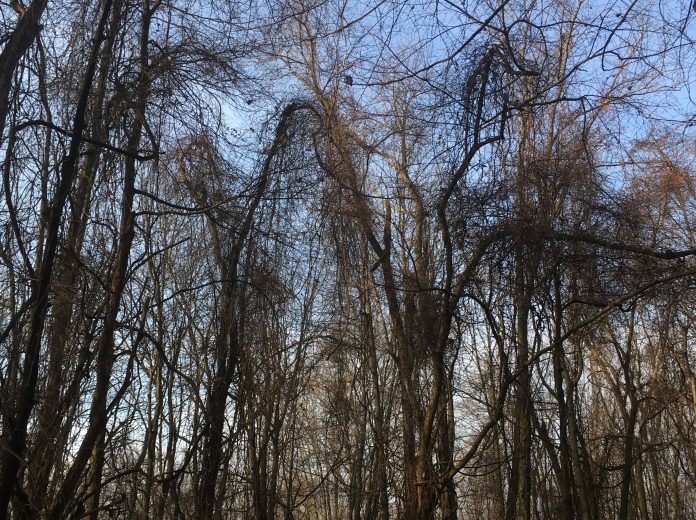
SALEM, Ohio — The first thing service forester Zach St. Laurent does when he meets with a landowner, especially if they are planning to harvest trees in the future, is discuss removing invasive species.
“If they harvest trees and remove that canopy — allowing more sunlight to hit the ground — invasives spread like crazy, inhibiting the growing of desirable tree species,” said St. Laurent, who works for the Pennsylvania Department of Conservation and Natural Resources
An invasive species is a non-native species that spreads and establishes in natural areas. It typically grows faster and more robust than the natives, displacing native species. And since the species is non-native, it lacks natural predators and diseases which may control its spread in its native lands.
Get outdoors now
Winter is a great time of year to walk your forest and look for invasive species, so you know what you are working with, said Ryan Clester, Ohio Department of Natural Resources service forester serving Mahoning, Carroll, Columbiana, Stark and Tuscarawas counties.
He names tree of heaven, princess tree, honeysuckle, privet and burning bush and oriental bittersweet as some invasives that are common and can do a lot of damage.
Invasive species impact native plants, animals and natural ecosystems by:
Reducing native plant diversity, which can increase diseases
Displacing natural water flow
Altering soil characteristics; nutrient levels and aeration
Changing the intensity levels during planned and unplanned fires
Displacing wildlife that rely on native plants for food, shelter and breeding sites
(Source: Ohio Department of Natural Resources)
Western Pennsylvania combats similar invasives, St. Laurent said, who covers of Beaver, Butler and Lawrence counties. He would add to the list multiflora rose, Japanese knotweed, Autumn and Russian olive, and Japanese and European barberry.
“When it comes to invasives, Beaver County has them all,” St. Laurent said, who also manages 16,000 acres of the Deer Creek State Forest.
“The biggest issue I see is multiflora rose,” St. Laurent said. “This is one we introduced ourselves and it took over.”
He notes that multiflora rose was used by the game commission and farmers to be a living fence and now is one of the most damaging invasive plants in our region.
Oriental bittersweet is another one that is difficult to control, and can choke out your canopy, Clester said.
“I’ve asked people how to manage it and they respond, ‘good luck,’” St. Laurent adds.
Herbicide
The only method to control bittersweet is an herbicide — and ongoing herbicide treatment, St. Laurent said.
“We’ve found with pulling or cutting, the vines get very angry when you do that they send all their energy to sprouting new vines — making it worse.”
Both Ohio State and Penn State Extension have documents referencing which chemicals to use, how much and how often for each invasive species.
“Be sure to read the label of all chemicals, because what it says is the law,” Clester said. “I don’t recommend any other way [to get rid of invasive species]. They spread rapidly, have extensive root systems and cutting them down can make it worse.”
There is often a debate over whether or not to use chemicals, but when you do a cost versus benefits analysis, you’ll see chemicals used properly are most effective.
The active ingredient in Roundup products is glyphosate, which, St. Laurent said, “has actually been found to be safer for humans than caffeine at the same exposure levels.”
Hack-n-squirt
The hack-n-squirt method can be effective on Ailanthus altissima or tree of heaven, said Luke Walters, an ODNR service forester.
This is done by cutting through the outer and inner bark and into cambium layer of the tree. This layer is what transports sugars to the roots and water to the leaves.
“Once the cut is in this layer, keep the cutting tool in the wound created and slowly squirt your herbicide mix directly into the tree and remove the cutting tool,” he said. “This method allows for the herbicide to be applied directly into the stem, requiring less herbicide and effort to administer it.”
The number of hacks into the tree is determined by the size of the stem and the herbicide used.
Typically, hack and squirt calls for one hack for every 2 inches of diameter, meaning a 6-inch tree would need three hacks and the chemical applied, Walters said.

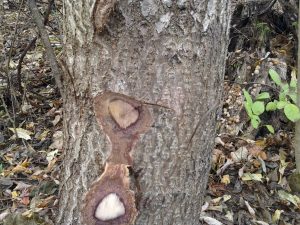
Typically, hack and squirt calls for one hack for every 2 inches of diameter, meaning a 6-inch tree would need three hacks and the chemical applied. (Luke Walters photo)
Misidentification
Misidentification is another issue foresters face. Many invasive plant species look similar to native plants. For example, multiflora rose is similar to domesticated roses with green stems and thorns.
“Tree of heaven looks like a black walnut,” said Clester. “Black walnut is very good for wildlife, so we don’t want to get rid of the good.”
Ways to identify tree of heaven includes unique leave scars, and its the seeds, which are winged and grow in clumps, with rust orange spots.
“If you crush the leaves of Ailanthus (tree of heaven’s scientific name), it smells like rotten peanut butter; if you crush a walnut leaf, it smells like walnut.”
Winter work
“Get started now, walk your woods so you know what you have. But you don’t want to apply herbicide when the sap is flowing, the flow will push the herbicide out,” Clester said.
“If you have a dense understory of shrubs and no mid-story, and you aren’t getting native regeneration, you likely have invasive species causing problems,” he said.
Start taking care of them before they become a big problem, is the advice from all the foresters.
Use resources available through Extension, the ODNR and Pa. DCNR and call a service forester, Clester said. They can walk the woods with landowners, identify plants and make a plan on how to take care the invasive species.
Invasive plan species
Oriental bittersweet is a damaging invasive plant capable of girdling and even killing large trees in Ohio and Pennsylvania. Oriental bittersweet closely resembles American bittersweet. The main difference is that the American variety has flowers and fruit at the ends of the branches; and the oriental variety has flowers and fruit in the axils of the leaves. (Ryan Clester photo)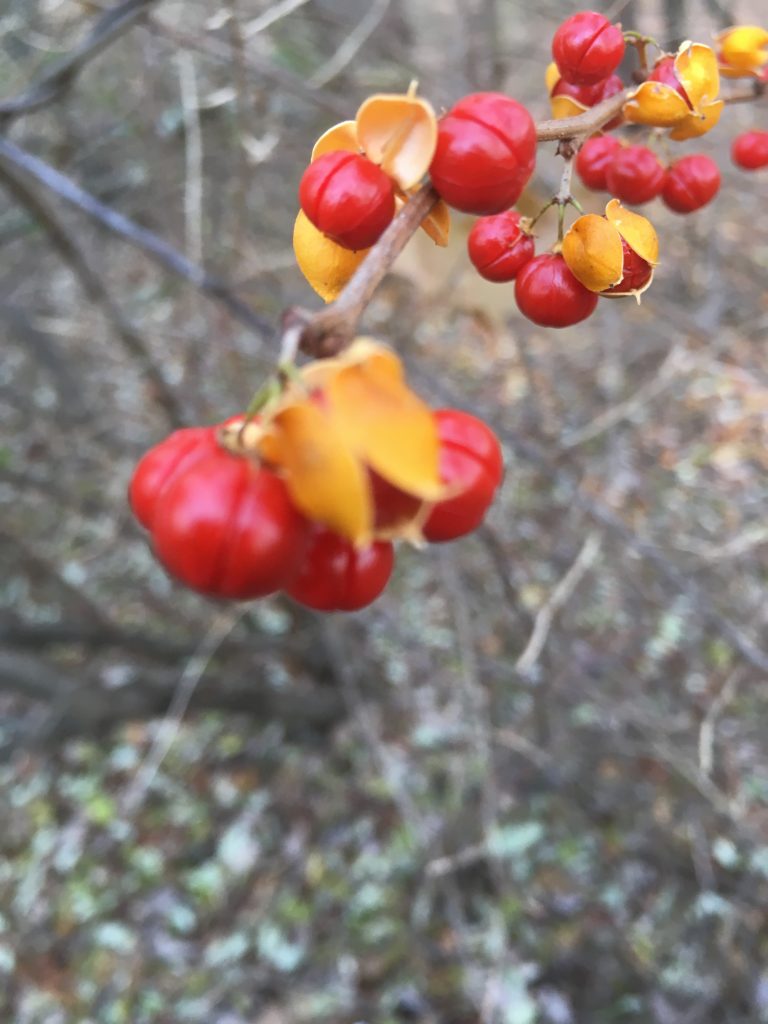
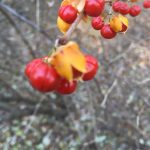 View
View
Invasive plan species
Oriental bittersweet is a damaging invasive plant capable of girdling and even killing large trees in Ohio and Pennsylvania. Oriental bittersweet closely resembles American bittersweet. The main difference is that the American variety has flowers and fruit at the ends of the branches; and the oriental variety has flowers and fruit in the axils of the leaves. (Ryan Clester photo)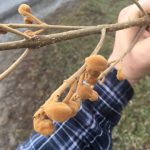 View
View
Invasive plant species
The Paulownia tomentosa tree, native to China, is commonly referred to as the princess or empress tree. The tree spreads aggressively through abundant self-seeding. Pictured are the tree’s buds, which are covered with fine, fuzzy hairs. (Ryan Clester photo)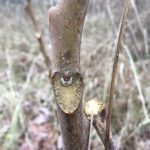 View
View
Invasive plant species
Ways to identify tree of heaven includes unique leave scars, and its the seeds, which are winged and grow in clumps, with rust orange spots. (Ryan Clester photo)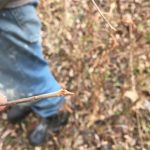 View
View
Invasive plant species
The bud of buckthorn, is pointy and can be a good way to identify it. (Luke Walters photo)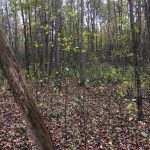 View
View
Invasive plant species
Buckthorn can grow everywhere and start to take over a landscape. Everything green in this picture is buckthorn. (Luke Walters photo)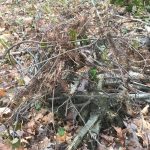 View
View










I live in SW Pa. there is another invasive here brought in by gas exploration, Chinese Lespedeza. It is everywhere they break ground where I live. They do nothing to control it on this private watershed property. If it’s not in Ohio, it will be. It’s brutalsnd has destroyed the local ecosystem